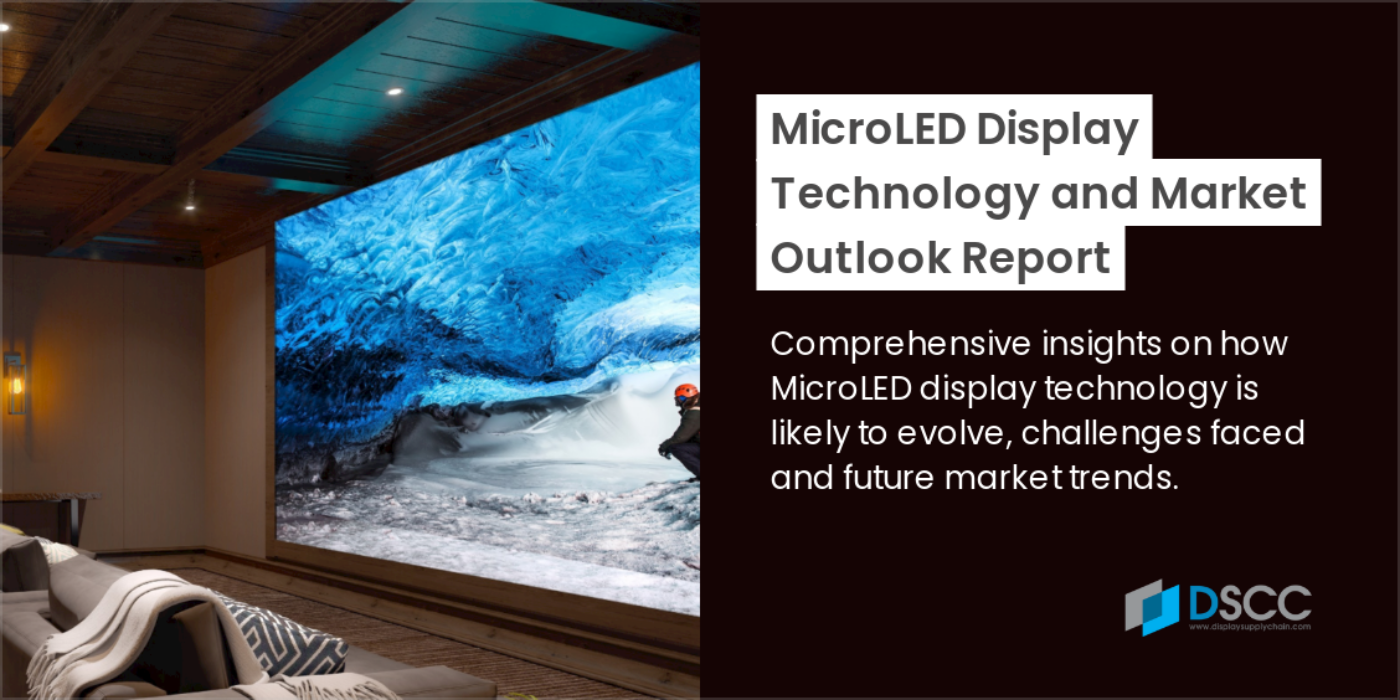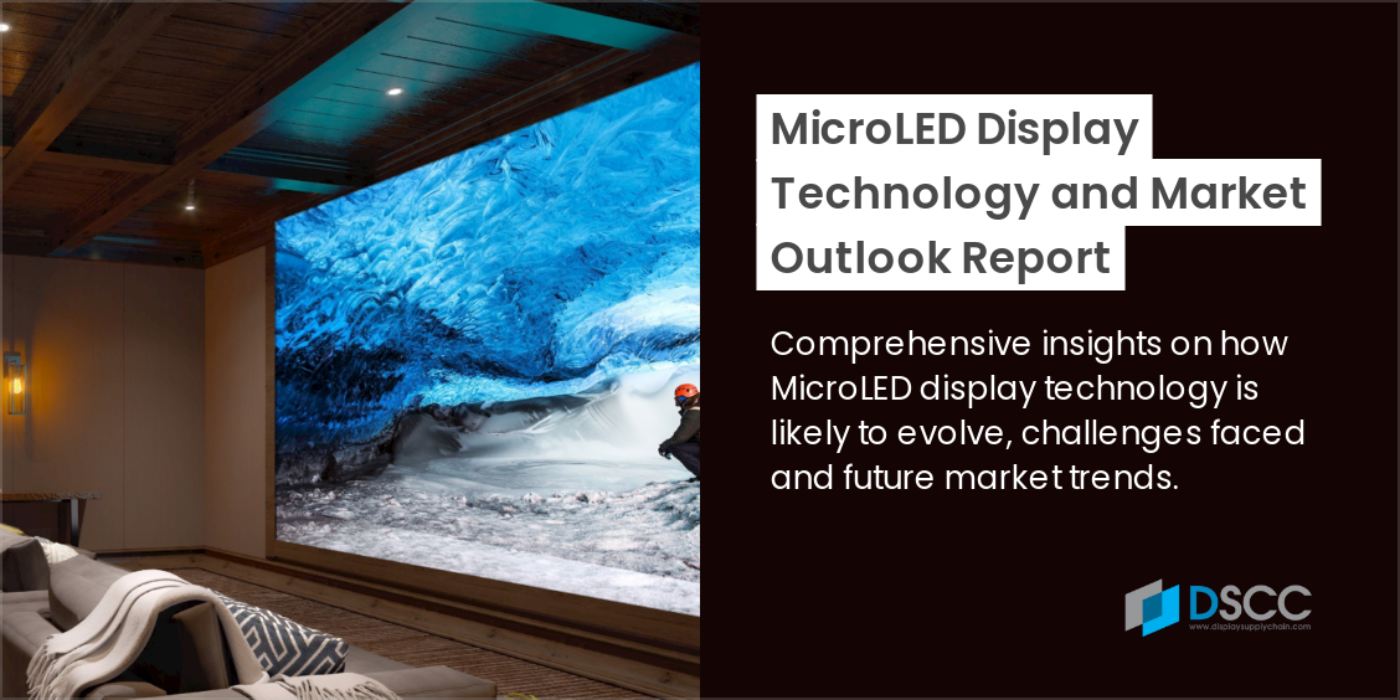MicroLED市場はスマートウォッチがリード~専門レポート (全332頁) が発刊
出典調査レポート MicroLED Display Technology and Market Outlook Report の詳細仕様・販売価格・一部実データ付き商品サンプル・WEB無料ご試読は こちらから お問い合わせください。
これらDSCC Japan発の分析記事をいち早く無料配信するメールマガジンにぜひご登録ください。ご登録者様ならではの優先特典もご用意しています。【簡単ご登録は こちらから 】
DSCCの MicroLED Display Technology and Market Outlook Report 最新版によると、MicroLED市場は2028年までに14億ドルを超えると予測されている。MicroLEDはスマートウォッチ、ARグラス、車載ディスプレイなど、ディスプレイの性能が優れていれば高価格でも受け入れられる用途で採用が次第に進むだろう。
「現在複数の製品が販売されているものの、MicroLEDはまだ主流技術には程遠い」とDSCCのディスプレイ調査担当ディレクターであるGuillaume Chansinは指摘する。「初のMicroLEDスマートウォッチが来年発売される予定だが、これも市場のハイエンドをターゲットにしたものになるだろう」
スマートウォッチなどのウェアラブルデバイスでは、高輝度で高効率というMicroLEDの特性の効果が発揮される。FPDメーカーにとって、スマートウォッチはフォームファクターが小さく画素数が低いことから、生産工程における歩留まりの低さの影響が当初は軽減される。DSCCでは、ウェアラブルがいずれはTVを抜いてMicroLEDの最大市場セグメントになると予測している。
これまでにMicroLED TVを推進してきたブランドで最大手はSamsungだ。CES 2023でSamsungは50インチから140インチまで7種類のサイズのデモンストレーションを行った。ただし、今年発売されたのは89インチモデルのみで、価格は約10万ドルだった。価格は時間が経てば下がるだろうが、MicroLED TVは今後も市場で高級品の位置付けにとどまるとDSCCでは予測している。Samsungはまた、MicroLEDよりも価格がもっと手頃なQD-OLED技術を新たに採用している。Samsungは自らを、MiniLED LCD、QD-OLED、MicroLEDを提供する唯一のTVブランドと位置付けている。
AR/VR用については、MicroLEDはシリコンCMOSバックプレーンのモノリシックLEDアレイで製造され、これにより要求される高ピクセル密度を達成する。MicroLEDは将来のスマートグラスを実現する技術として注目されており、Meta、Google、Snapなどの大手が独自のディスプレイを自社開発している。ただし、課題はフルカラーディスプレイの製造である。量子ドット色変換、エピ層スタッキング (epilayer stacking)、動的波長チューニング (epilayer stacking) など、解決策がいくつか提案されている。本レポートではこれらすべてのアプローチについて紹介している。
本レポートには2028年までの用途別市場予測を収録しており、以下のようなMicroLED関連の重要トピックをすべて取り上げている。
- エピタキシーと効率の課題
- マストランスファー技術
- 歩留まりおよび欠陥管理戦略
- 量子ドット色変換
- バックプレーンおよび駆動スキーム
- モノリシックディスプレイ (LEDoS)
- コスト分析 (エピウェハー、バックプレーン、量子ドット色変換)
- 競争情勢
本レポートに掲載の企業は以下の通り。
- Aledia
- ams OSRAM
- Apple
- Applied Materials
- AUO
- Coherent
- eLux
- Ennostar
- Foxconn / Sharp
- Jade Bird Display
- K&S
- Lumileds
- Meta
- MICLEDI Microdisplays
- Mojo Vision
- NS Nanotech
- PlayNitride
- Porotech
- Samsung
- Saphlux
- Seoul Viosys
- Snap
- Sony
- TCL
- Toray
- VueReal
- Vuzix
- X Display
MicroLEDの最新情報を必要とするFPDサプライチェーン関係企業やエンドユーザーにとって MicroLED Display Technology and Market Outlook Report は価値ある情報源となる。本レポートではMicroLED搭載製品を開発中のOEMをリストアップしており、出荷数と出荷額の予測を用途別に提示している。
出典調査レポート MicroLED Display Technology and Market Outlook Report の詳細仕様・販売価格・一部実データ付き商品サンプル・WEB無料ご試読は こちらから お問い合わせください。
[原文] New MicroLED Forecast Shows Smart Watches Taking the Lead
The market for MicroLED displays is expected to surpass $1.4B by 2028, according to DSCC’s latest MicroLED Display Technology and Market Outlook Report. MicroLED will slowly appear in a few applications, such as smart watches, AR glasses and automotive displays, where superior performance can justify a higher price for the display.
“Although there are some products available right now, MicroLED is still far from being mainstream technology,” notes Guillaume Chansin, Director of Display Research at DSCC. “The first MicroLED smart watch is scheduled to launch next year, but even this will be targeted at the high end of the market.”
Wearable devices such as smart watches can benefit from the high brightness and high efficiency of MicroLED displays. For display manufacturers, the small form factor and low pixel count of smart watches can initially mitigate low yields of production processes. DSCC predicts that wearables will eventually overtake TV as the largest market segment for MicroLED display.
Samsung has so far been the leading brand pursuing MicroLED TVs. At CES 2023, Samsung demonstrated seven different sizes, ranging from 50” to 140”. However, only an 89” model was made available this year, with a price tag around $100K. While prices will decrease over time, DSCC expects that MicroLED TVs will remain on the luxury end of the market. Samsung has also adopted the new QD-OLED technology, which is much more affordable than MicroLED. Samsung has positioned itself as the only TV brand offering MiniLED LCD, QD-OLED and MicroLED.
For AR/VR, MicroLED displays are manufactured as monolithic LED arrays on silicon CMOS backplanes to achieve the required high pixel density. MicroLED is seen as an enabling technology for future smart glasses and large companies such as Meta, Google and Snap are developing their own display in-house. However, making full color displays has been a challenge. Several solutions have been proposed, including quantum dot color conversion, epilayer stacking and dynamic wavelength tuning. All these approaches are described in the report.
The DSCC report includes market forecasts by application to 2028 and addresses all the important topics on MicroLED, including:
- Epitaxy and efficiency challenges;
- Mass transfer technologies;
- Yield and defect management strategies;
- Color conversion with quantum dots;
- Backplanes and driving schemes;
- Monolithic displays (LEDoS);
- Cost analysis (epiwafers, backplanes, QD color conversion);
- Competitive landscape.
Companies covered in the report include:
- Aledia
- Ams OSRAM
- Apple
- Applied Materials
- AUO
- Coherent
- eLux
- Ennostar
- Foxconn / Sharp
- Jade Bird Display
- K&S
- Lumileds
- Meta
- MICLEDI Microdisplays
- Mojo Vision
- NS Nanotech
- PlayNitride
- Porotech
- Samsung
- Saphlux
- Seoul Viosys
- Snap
- Sony
- TCL
- Toray
- VueReal
- Vuzix
- X Display
This report will be valuable to anyone in the display supply chain and end users who need to stay up to date with the latest developments in MicroLED. It lists the OEMs currently developing products incorporating MicroLED displays and provides shipment and revenue forecasts for each application.

